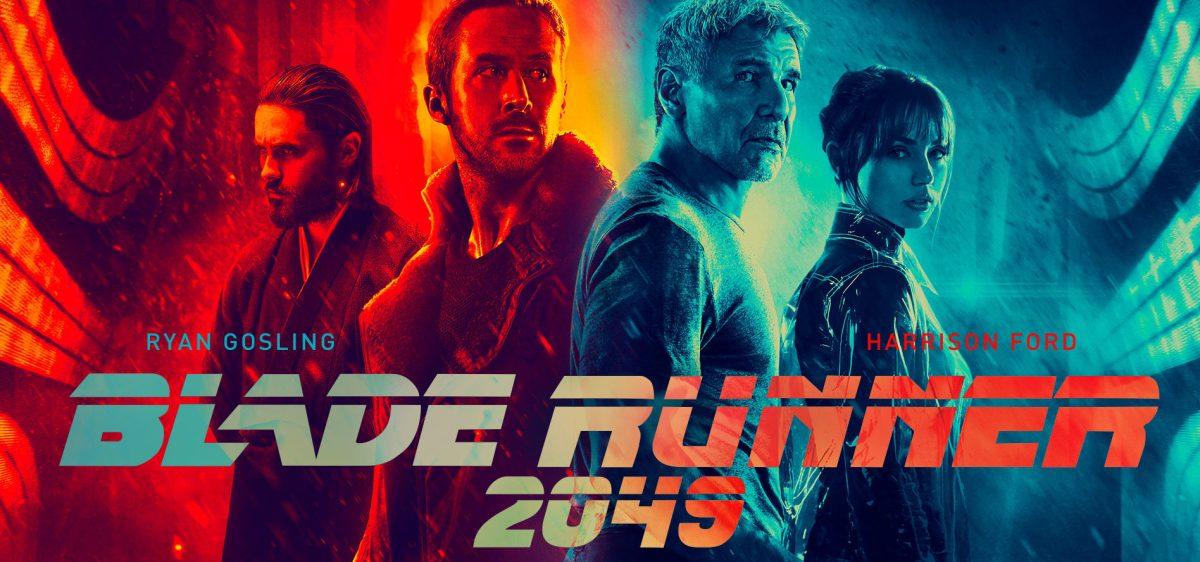“I didn’t want it to end”.
These were the words heard throughout the crowd in a local AMC theater. Everyone was leaning forward on the creaky seats, waiting and hoping for more. Blade Runner 2049 is one the few movies that could elicit such a reaction.
It may be too slow and moody for the casual viewer, but the pace and emotion sets this movie apart from other sci fi epics and sequels today. With spellbinding visuals, thoroughly enthralling sound design, and spectacular performances by its leads, Blade Runner 2049 works as a worthy successor to an already captivating art house film.
Blade Runner 2049 tells the story of K, a replicant LAPD officer played by Ryan Gosling, who is, as the name implies, a Blade Runner. Tasked with hunting down others of his kind, he is able to mercilessly kill if necessary.
That is, until he discovers that a certain replicant (Rachael) was able to bear a child. The impact of this child would be tremendous on the world of humans and replicants, and so K must find and destroy all evidence of the child. However, his job is made more difficult when Niander Wallace’s – portrayed by Jared Leto – replicant maker David Wallace tasks his replicant assistant Luv, played by Sylvia Hoeks, to find the child at any cost.
From the opening shot, the dull lighting and unsettling score masterfully set the mood for the film. Dizzying, captivating, and at times revolting, the future presented in Blade Runner 2049 is not the ‘great big beautiful tomorrow’ that is often dreamed of. The obligatory flying car helps explore more of what the dystopian world of 2049 Los Angeles has to offer.
The film showcased the worst side of commercial capitalism: large ads using sex and objectification to sell products. With glimpses of companies that ceased to exist decades ago like Atari, Pan Am, and Peugeot (a French company that left the American Market decades ago), it is clear that not much has changed or progressed for the people of Los Angeles in 30 years. It’s not often that a film takes the time to immerse the audience in the world of its characters; and so with great cinematography, set design, and special effects, all of these elements seem to become normal in the world.
When mentioning this movie, one must never neglect the impact that the sound has on the film. Dunkirk was one of the rare gems in which the music and sound helped add to the illusion of tension and fear in the film. However, Blade Runner 2049 takes sound design to the next level, and is the reason movies are meant to be seen in theaters.
Gunshots, flying car engines, and far off messages on speakers come from all directions, connecting the audience further to the film. To hear Hans Zimmer and Benjamin Wallfisch’s score blare on the speakers at pivotal moments is an incredibly satisfying feeling. The warm sound of the synthesizer gives greater emotional depth to an undisclosed final fight scene and ending scene.
What does it mean to be alive? What does it mean to be human? Is it defined by your origin, or is it defined by how you choose to give meaning to the consciousness that you were given? These are the crucial questions Blade Runner 2049 asks its audience. K is a replicant, and the main character of this film. For the entire film, he searches for something that he can hold onto. Excellently portrayed by Ryan Gosling, the titular character goes through much emotional strain as he goes on his journey to uncover the truth about a replicant born child.
K feels human emotions of pain and loss. While never meant to be more than a simple replicant, he chooses to fight for a cause, thus giving his life a sense of meaning. Regardless of his origin, he defines his humanity by what he does, and that is what makes the ending so beautifully bittersweet.
The fate of the replicant revolution remains a mystery, and what ultimately could come of the reunion between Deckard and someone special to him. And yet, the audience is given complete closure for the life of K, a Blade Runner in 2049.



























